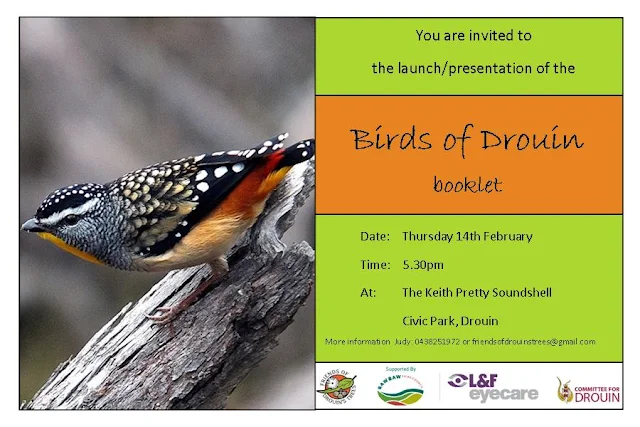This is the first in a series of short posts that will
explain some of the best ways to attract, principally, indigenous or native
bird species to your garden. Topics covered will include landscaping
suggestions, plant lists, nest boxes, benefits that birds bring to your garden,
and more, plus today’s topic …
Just add water
Perhaps the simplest and easiest way to attract birds is to
provide them with a water source, but there are a few cautionary points to
note.
 |
| In the shade, nearby foliage, rocks and sticks for access, easy to top up, etc. |
A water source for birds can be from a small bowl on the
ground, (not highly recommended), to a properly installed bird bath, a pond or
even a dam if your garden is large enough.
 |
| A small Brown Thornbill using a wire 'ramp' to access a deep water bowl. |
As part of
maintaining their feathers, many birds need to bathe before preening. Preening
is the process of cleaning and re-arranging their feathers into their correct
positions – birds have several types of feathers that play different roles such
as display, camouflage, controlling flight, insulation, water-proofing, etc.
Generally, a garden water source for birds should be
shallow, as most garden variety species do not like deep water. Water in a
shallow bowl can heat up and evaporate quickly, requiring frequent topping up.
An easy solution to this dilemma is to place a secure branch into the water or
include a small collection of rocks and stones for the birds to make safe
access.
 |
| Musk Lorikeet enjoying a bath and emptying the bowl in the process. |
The arid
species of South African Sandgrouse allows its breast and belly feathers to
soak up water at a waterhole and then to fly up to 30 km to its nest to let its
babies suck the moisture from the specially adapted feathers.
A garden bird bath is best located in a shady, quiet corner
of the garden, but not too remote or too well hidden. It is nice to be able to
observe the birds using the water source from within your house. A well hidden
bird bath might encourage cats to approach unseen. Some nearby vegetation
however, allows the birds to approach carefully and to escape quickly if they
are disturbed.
 |
| Rainbow Lorikeets having a party at the water bowl |
A remote bird bath requiring several hose connections in
order to flush it or top it up can mean this slightly time-consuming exercise
gets overlooked. A regularly cleaned and topped bird bath becomes quickly well
known by the birds and can become an everyday drink or bathing place.
 | ||
| With nearby vegetation New Holland and Crescent Honeyeaters are among regular visitors to this dam at Wonthaggi Heathlands. |
Birds do
not have sweat glands like mammals, but they do lose water through respiration
and their droppings. Most garden-variety birds like to drink twice a day.
Note
The friends
of Drouin’s Trees will be launching their new booklet, Birds of Drouin on
Thursday 14th of February in Civic Park – Drouin, at 530pm. This is
a free public event however to help defray design, printing and binding costs,
the booklets will be available for $2 each. (The third reprint of the very
popular Drouin Tree Walks booklet will also be available).

